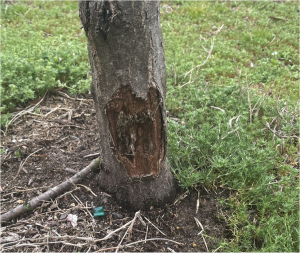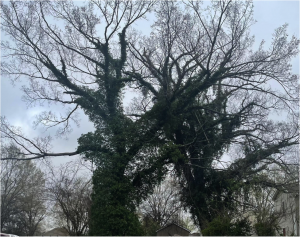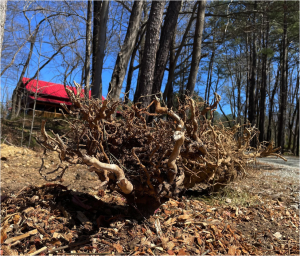
Spring is in the air. It’s time to get outside and think about the garden and yard. Here are a few new trends in Arboriculture to ponder as you get outside and get your hands dirty.

Volcano mulch
Yes, this is a bad thing in the trees in your yard. It can lead to decay in the trunk of the tree and it can cause roots to girdle (cause a bare line in the bark) the trunk. However, new research shows that trees in shopping malls and office parks are physiologically different and deep mulch is actually beneficial for them. Researchers are now saying that the proper depth for mulch around trunks in retail and business areas is actually 3 inches deeper than it is right now. If there are 12 inches of mulch at the base of these trees, the proper mulch depth should be 15 inches.

String trimmer damage? Great!
Side by side studies have shown that young trees that are coddled and nurtured too much frequently don’t survive long-term in the landscape. If you scrape the bark on the trunk, it teaches the tree how to compartmentalize decay at a young age. When you plant a tree, that rope around the trunk may look a little unsightly, but remember to leave it there to help the tree grow through hardship. We have been helicopter gardening our newly planted trees way too much!

Remember the benefits of English Ivy!
We thought that trees have an amazing system of lignin and cellulose that grows where needed to give structure and support. Research now shows that while trees do a pretty good job of building their own structure over the years, a support system that is dramatically enhanced by a strong network of English Ivy vines.

Green side… down???
Yes, it is a common joke amongst landscapers: Fully train your tree and shrub planting crew with 3 simple words “Green side up”. That may be rethought if the trend of inverted planting continues. Rumor has it this innovative planting method started out at a land grant university that is as well known for stupid party stunts as it is for serious research. There is a surprising success rate in newly-planted trees with this method. Added bonus, you don’t have to worry about finding that pesky root flair.
Before you use this information to guide your weekend backyard projects, please remember that Saturday is April Fools Day. We may have stretched the truth or simply made some (or, well… all) of this up. If you do decide to plant your tree upside down, that’s awesome. We just ask that you don’t mention where you got the idea.


